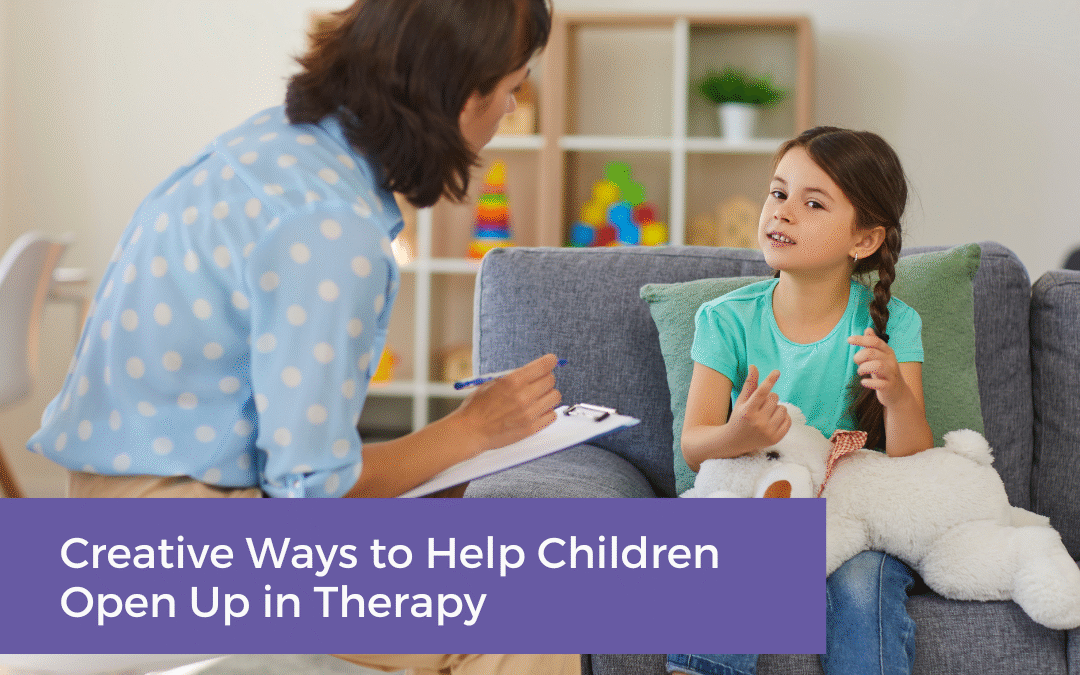Getting children to open up about their thoughts and feelings can be challenging, especially if they have experienced trauma, struggle with communication, or are neurodivergent. For many parents, it can feel like an impossible task,how do you help your child express themselves when they don’t have the words?
This is where creative approaches, like life story work, can be incredibly powerful. Originally developed for children in foster care and adoption, life story work is a therapeutic tool that helps young people make sense of their past, process emotions, and feel more in control of their own story. But its benefits go far beyond that. Any child who finds it difficult to express themselves,whether due to anxiety, trauma, neurodivergence, or simply personality can benefit from creative storytelling techniques to help them feel heard, understood, and validated.
Why Some Kids Struggle to Communicate
Every child communicates differently. Some are naturally chatty, while others need time, space, and the right approach to feel comfortable sharing. Children who have experienced trauma or disruptions in their early life may find it particularly hard to express their feelings. Neurodivergent children, including those with autism or ADHD, may struggle with verbal communication or find it overwhelming. Some kids don’t like being put on the spot, while others simply don’t have the language yet to articulate their experiences.
How Life Story Work Helps
Life story work is all about giving children a way to express themselves that feels safe, engaging, and personal to them. Instead of sitting down for a serious conversation (which can feel intimidating), it allows them to explore their experiences in a structured but flexible way.
Using art, storytelling, and play, children can start to make sense of their emotions and communicate in ways that feel natural to them. Whether it’s through drawing, making a scrapbook, or creating a timeline of important life events, life story work helps children connect the dots between their past and present in a way that is both gentle and empowering.
Creative Activities to Try at Home
You don’t have to be a therapist to use elements of life story work with your child. Here are a few creative activities that can help them open up and process their experiences in a way that feels safe and engaging:
1. My Life Timeline
Using a roll of paper or a notebook, create a timeline of your child’s life. Encourage them to mark important moments,birthdays, moving house, starting school, making a new friend,whatever feels significant to them. This can be a great way to help them reflect on past experiences and how they have shaped who they are.
2. Storytelling Through Play
For younger children, dolls, action figures, or stuffed animals can be a great way to explore emotions. Acting out scenarios can help children express things they may not be able to say outright. You can gently guide the play by asking questions like, “What do you think Teddy is feeling right now?”
3. Scrapbooking & Memory Boxes
Encourage your child to create a scrapbook or memory box filled with photos, drawings, and little objects that represent important moments in their life. This can be especially helpful for children who have experienced big changes, such as adoption, a family separation, or moving to a new place. Looking through their scrapbook together can open up conversations in a way that feels natural and non-threatening.
4. Art as Expression
For children who struggle with verbal communication, art can be a powerful way to express emotions. Drawing, painting, or even using clay can allow them to communicate feelings they might not have words for. Let them create freely, and if they’re comfortable, ask them to tell you about what they’ve made.
5. Letter Writing
Encourage your child to write letters,not necessarily to send, but as a way to express their thoughts and feelings. They might write to a family member, a past version of themselves, or even to a future version of who they want to become. If writing feels too formal, they could also record voice messages or videos instead.
When This Approach Can Be Helpful
These creative techniques aren’t just for children who have experienced trauma,they can be helpful in many situations, including:
- For neurodivergent children, who find traditional conversation difficult or overwhelming.
- For children experiencing anxiety, who may struggle to articulate their worries.
- For children who have experienced family separation, adoption, or foster care, helping them process changes in a way that feels safe.
- For children dealing with grief or loss, providing a structured way to express emotions.
- For any child who finds it hard to talk about their feelings, offering alternative ways to communicate.
Helping Your Child Feel Safe to Share
No matter which approach you try, the most important thing is to create a sense of safety. Children need to know that their thoughts and feelings are valid, that they won’t be judged, and that they won’t get in trouble for expressing difficult emotions.
“For many children, their history feels fragmented and confusing. By piecing it together in a safe space, they gain a sense of identity and understanding. It’s not just about the facts,it’s about processing emotions, creating meaning, and fostering healing.” Tham Fuyana
Give them time,some children take longer than others to feel ready to open up. Be patient, and let them lead the process at their own pace. Most importantly, let them know that their story matters, and that you’re there to listen whenever they’re ready.
Life story work is a powerful way to help children explore and understand their own experiences. Whether through art, play, or storytelling, these creative approaches give them a voice in a way that feels natural and safe. While not a replacement for therapy, these methods used at home can be a valuable tool for parents looking to strengthen communication, build trust, and help their children feel seen and heard.
If your child struggles to communicate, consider incorporating some of these ideas into your everyday routine. You might be surprised at how much they have to say,when given the right space to express it.
Want to learn more about how life story work can help children process their experiences? Read our interview with therapist Tham Fuyana








Recent Comments